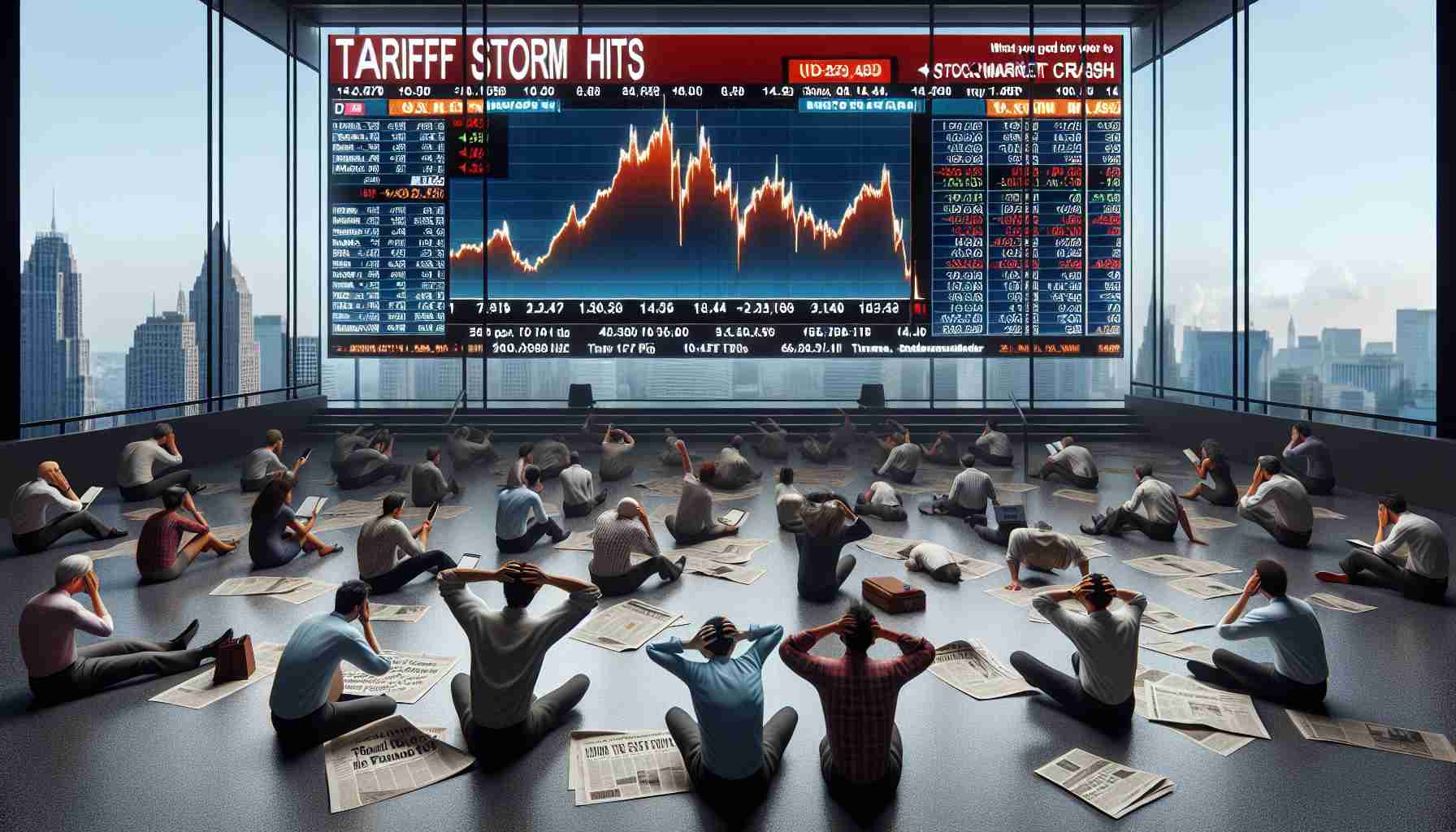- U.S. stock futures indicate a significant decline in major indices due to new tariffs announced by President Trump.
- Tariffs include 25% duties on goods from Canada and Mexico and a 10% tariff on Chinese imports.
- The tariffs will particularly impact energy imports and essential commodities, causing prices to rise.
- Canada and Mexico are retaliating with their own tariffs on American products, escalating the trade conflict.
- The U.S. dollar has reached near a year-high following the announcement, with crude oil prices also increasing.
- Concerns over inflation are leading to a cautious approach from the Federal Reserve regarding interest rates.
As a tempest brews in the financial world, U.S. stock futures are signaling a steep decline for major indices. Wall Street is reeling from President Trump’s surprising announcement of hefty tariffs on imports from China, Mexico, and Canada. With Nasdaq futures plummeting 2.2%, followed closely by the S&P 500 down 1.6%, and Dow futures sinking by 1.1%—equivalent to a staggering 500 points—investors brace for impact.
These new tariffs, effective Tuesday, will impose 25% duties on goods from Canada and Mexico, along with a 10% tariff on products from China. This bold move particularly affects energy imports from Canada, raising costs significantly. Following the announcement, the U.S. dollar index surged to near a year-high, and crude oil prices jumped nearly 2%.
In response, Canada and Mexico wasted no time retaliating. Prime Minister Justin Trudeau revealed plans for 25% counter-tariffs on roughly $107 billion worth of American goods. As the trade war escalates, uncertainty looms over President Trump’s trade agenda, influencing the Federal Reserve’s cautious stance on interest rates—fears of rising inflation are at the forefront.
Prepare for a ripple effect across numerous sectors, as prices for essentials like automobiles, fuel, clothing, and even avocados are expected to climb. The impending storm in trade policy promises to reshape the consumer landscape, and investors are on high alert. Buckle up for a bumpy ride ahead!
The Coming Trade Tsunami: What You Need to Know About the Latest Tariff Wars
In light of recent developments in U.S. trade policy, particularly the imposition of new tariffs on imports from major trading partners, several crucial updates and insights are emerging. As the trade war intensifies, both immediate and long-term implications are expected to unfold across various sectors of the economy.
Key Insights & Market Forecasts
– Market Reactions: Wall Street is reacting sharply to these announcements, with significant declines in stock futures across major indices. This trend is projected to continue unless there are substantial diplomatic resolutions.
– Economic Impact: Analysts forecast that these tariffs could lead to a 2-3% increase in consumer prices across affected goods, impacting disposable income and potentially slowing economic growth further.
– Supply Chain Disruption: Companies heavily reliant on cross-border supply chains, especially in manufacturing, may find operational costs rising due to tariffs on raw materials, likely causing delays and shifts in production strategies.
Limitations & Threats
– Inflation Risk: The Federal Reserve may need to assess the potential for rising inflation due to increased tariffs and market fluctuations, possibly leading to unplanned adjustments in interest rate strategies.
– Investment Hesitancy: The ongoing trade tensions might deter foreign investment, as businesses seek stability over potential risks associated with changing tariffs and trade regulations.
Use Cases & Comparisons
– Sectors Most Affected: Industries like automotive, technology, and agriculture are bracing for significant price hikes and supply disruptions. A comparison to previous trade disputes shows that technology stocks typically suffer the most during periods of high uncertainty.
Pros and Cons of Tariffs
– Pros: Some argue tariffs can protect domestic industries from cheaper imports and support local job creation.
– Cons: However, tariffs can lead to higher prices for consumers, retaliatory measures from trading partners, and a potential economic slowdown.
Pricing Trends
– Analysts expect that with new tariffs, prices for imported goods such as automobiles and electronics could see an immediate hike. For instance, vehicles from Mexico may face price increases averaging $1,000 per unit.
Predictions
– If retaliatory tariffs are enacted by Canada and Mexico as they have indicated, the U.S. could see a downturn in trade relationships, leading to a potential “trade recession” scenario within the next 6-12 months.
Questions and Answers
1. What goods are primarily affected by the new tariffs?
– The new tariffs primarily impose 25% duties on goods from Canada and Mexico, along with a 10% tariff on Chinese products. Key areas impacted include automobiles, fuel, and consumer electronics.
2. How might the tariffs affect the average consumer?
– Consumers can expect higher prices on a variety of goods, leading to reduced purchasing power. Essential items, such as fuel and clothing, are particularly vulnerable to price increases.
3. What actions can businesses take to mitigate the impact of tariffs?
– Businesses may seek to diversify their supply chains, explore alternative markets, or even adjust pricing strategies to cushion the financial impact of increased tariffs.
For more in-depth analysis and the latest updates, visit Forbes to stay informed on the economic implications of these trade policies.













